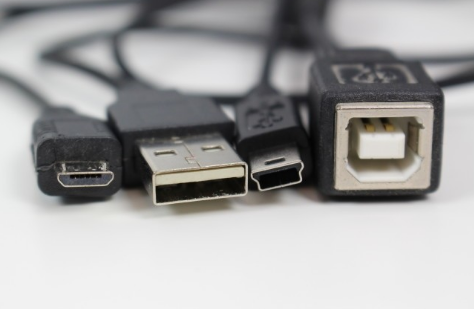How to distinguish between USB Type-C and USB 3.1?
The arrival of USB Type-C interface and USB 3.1 standard should provide more convenience for consumers. However, from the current point of view, it seems that these new standards have not only provided consumers with a better experience, but also brought many hidden dangers. Google engineer Benson Leung recently discovered that many USB-C data cables on the market do not fully comply with the latest USB specification standards.
First of all, we should be clear that although USB-C and USB 3.1 often appear together in some websites or product introductions, in fact USB-C is not equivalent to USB 3.1. USB 3.1 is an industry standard initiated by large companies such as Intel. The biggest feature of USB 3.1 is that the data transmission is extremely fast, and the theoretical speed can reach 10Gbps. USB Type-C is a specification of a connector, consisting of a Type-C plug and a Type-C socket.
In the latest USB 3.1 standard, there are three interface styles, one is Type-A (that is, Standard-A, the most common USB interface style on traditional computers), and one is Type-B (both Micro-B, the current mainstream Android smart The interface style used by mobile phones), the other is Type-C (that is, the newly-designed interface style mentioned above).
Then we should be able to understand it easily. Although USB Type-C is designed based on USB 3.1, this does not mean that devices using this connection method must all support the USB 3.1 standard; contrary to our thinking, for the older The old USB 3.0 Type-A interface devices are compatible with the USB 3.1 standard.

So why do some devices use a USB Type-C interface that is not compatible with the USB 3.1 standard? What's the point of doing this? Yes, it's for convenience-because the USB-C interface is the same as Apple's Lightning interface. It is also worth mentioning that, in addition to the acceleration of data transmission speed, each generation of USB standard updates will also have the enhancement of scalability and the acceleration of current transmission speed, and other internal technology updates.
Because the original USB standard did not have power supply capability, the power supply of USB 1.0 and 2.0 was only 2.5w (0.5A / 5v). Although this is enough to power small electronic devices such as mobile phones, it is obviously not enough for devices such as mobile hard drives. And even for charging mobile phones, 2.5w is not so plentiful for now. USB 3.0 was born, and its power supply can reach 4.5w (0.9a / 5v). The USB-Type C 1.1 specification also comes with its own power supply operating mode, under which the USB-Type C interface can be used for fast charging.
As part of the power supply standard, the new power management system introduces the level of power required to implement the new bidirectional data channel. This is to ensure compatibility with traditional equipment and reduce equipment damage caused by non-compliant data cables. The main difference between USB 3.0 and 3.1 is that 3.1 supports up to twice the peak data transfer rate of 3.0. Most devices are likely to jump straight to 3.1, and the task of developers is to ensure that their devices can support these two latest standards while ensuring backward compatibility of their devices.
However, when it comes to the transmission rate, we must look at it as a whole, because this is the same as the law of barrels. Any failure to meet the standards will directly affect the final rate. For example, plugging a USB 3.1 device into a USB 2.0 interface will limit the transfer rate to 480 Mbps. In practical applications, hardware will also severely restrict your transfer rate, such as the hard disk itself.
So we can simply understand that: USB-C refers to a two-way connection type, and version numbers like "3.1" refer to data transmission speed and other specifications, such as the specifications of the interface or data cable. However, neither of these has strictly defined USB power supply specifications or peak current specifications, and the compatibility of equipment or data lines has not been emphasized.
Therefore, this has created many potential hidden dangers, and this uncertain expression is very dangerous. Part of the reason is that these people are trying to advance new technologies on the basis of compatibility with old equipment when setting standards. It is hoped that this table can help manufacturers understand the different versions of power supply standards in detail and be able to produce products that meet industry standards. And this is responsible for both its products and users.
If you want to know more, our website has product specifications for the USB Type-C and USB 3.1, you can go to ALLICDATA ELECTRONICS LIMITED to get more information

